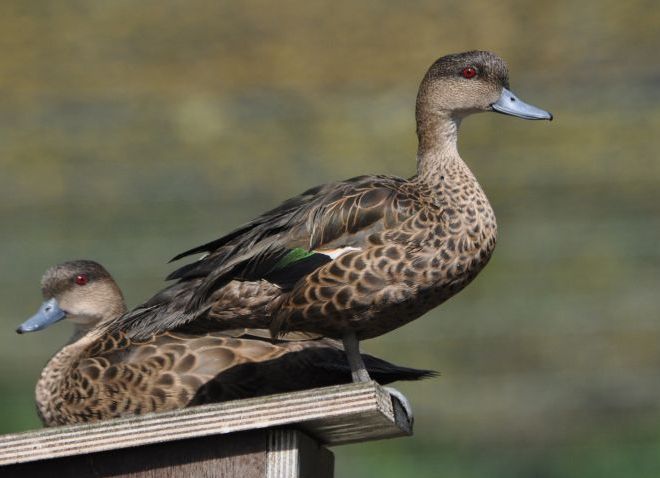
Sunda teal, orIndonesian teal(Anas gibberifrons)
Phylum —chordata
Class — aves
Order — anseriformes
Family — anatidae
Genus –anas
Appearance
This is a mottled brown duck with white and green flashes on its wings. The male and female Sunda teal share the same coloration, in contrast to the related chestnut teal, whose male and female are strikingly different. The nominate Sunda teal has almost identical coloration to the female chestnut teal and can only be distinguished by its lighter colored neck, paler face and especially the bulging forehead. The Andaman teal has a variable amount of white on the forehead and around the eyes. The Rennell Island teal looked like a smaller version of the nominate subspecies, with a stubbier bill. Juveniles are paler than adults, especially on the head.
Habitat
This dabbling duck found in open wetlands in Indonesia.
Diet
The diet consists of seeds and vegetative parts of aquatic and coastal vegetation, grasses, sedges, and insects, insect larvae, mollusks, and crustaceans. It gets food mainly by filtering water in shallow water, and also picks up seeds and insects from grass near water.
Reproduction
The Sunda teal nests primarily near clear water lakes and swamps, usually on the ground, but also in rabbit holes or holes, sometimes in tree hollows. The nest is a small depression lined with plant material.
The female lays 7-9 eggs, which are incubated for 24-26 days. Chicks fledge in about 8-9 weeks.
A couple is formed, as a rule, for a life.
In captivity
Lifespan in captivity is up to 30 years.
In summer, Sunda teals are kept in outdoor enclosures. The minimum size of the enclosure is 3 square meters.
In winter, they should be transferred to an insulated enclosure with a temperature of at least +10 °C. It is desirable to equip the enclosure with additives in the form of branches and perches. In the winter room, you must install a pool with running or frequently replaced water.
As a winter bedding for waterfowl, you can use soft hay, which is laid out in places where birds rest.
The diet includes grain feed-corn, wheat, barley, millet, oatmeal, wheat bran, grass, meat and fish meal, chalk, small shell, gammarus. In the warm season, it is good to give various greens - cut dandelion leaves, lettuce, plantain, duckweed. Good food for ducks - wet mixture of grated carrots, bran, various cereals. During the reproductive period and during molting, they are mixed with wet food or given separately: fish and minced meat. During working out a diet it should be calculated that the amount of raw protein does not exceed 16%.
Sunda teals are friendly to other birds, so they can be kept on the same pond with other ducks.
Artificial shelters for nests are installed in the paddock. Ducks independently incubate, breed and raise ducklings.
 Russian
Russian
 English
English
























